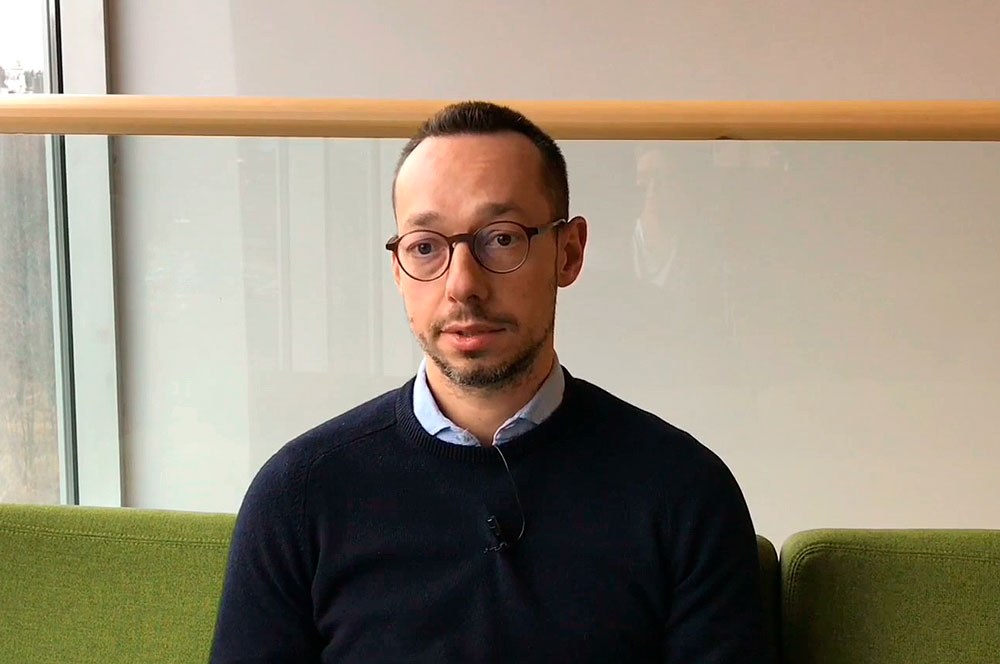Home monitoring of COPD patients could lead to fewer hospital admissions
New technology enables patients to self-test to find out whether the disease has progressed.


Many COPD patients find it burdensome having to travel to a hospital for check-ups and frequently having to be hospitalised.
Research now shows good results for a device that enables patients to monitor the disease at home. The Resmon Pro device can help the most seriously ill patients stay at home longer and also reduce the number of hospital admissions.
“Our research shows that Resmon Pro can help the most seriously ill patients,” says Paolo Zanaboni, a researcher at the Norwegian Centre for E-health Research (NSE).
Along with Italian researchers and colleague Trine Bergmo, he has evaluated the effects of the technology.
The investigation is part of a large EU project.
Home breathing test
Normally COPD patients have to go to a hospital for a breathing test where they take a deep breath for health personnel to measure how strong and hard they can exhale.
The test cannot be performed alone, as health personnel have to measure capacity at the same time. This can be awkward for patients who have to monitor themselves at home alone.
“Resmon Pro is less demanding, as patients to not need to do the large breathing movements. They can self-test at home in their living room,” says Zanaboni.
Describes the symptoms for the patient
The objective of the device is to prevent the disease from progressing.
A common problem for COPD patients is that they often experience the symptoms of progression too late, as it can be difficult to describe the symptoms of progression with words. Instead of having to express how they are feeling, the device measures the patient’s actual condition.
“When the patient breathes into the device, the machine measures physical variables and lung capacity. It will be written in black and white if the disease has progressed,” says Zanaboni.

Most seriously ill patients
The study was conducted with 330 patients, who were randomly divided into two groups.
In addition to COPD, the patients had several other diseases, such as chronic heart failure, sleeping problems or high blood pressure.
These patients are slightly more complex than those with just COPD. The degree of severity of the patients’ disease ranged from moderate to severe. There are four degrees of severity. Those with the ‘mildest’ diagnosis were not included in the study.
Patients in the home monitoring group had to use the machine daily. The measurements were sent to the hospital and researchers used the data to measure the effect. Patients in the control group received the normal follow up only.
Health personnel alerts
If the values fell when the patients breathed into the device, health personnel were alerted. This allowed them to determine whether the patient’s condition was about to deteriorate. They telephoned the patient and asked him to take/not to take his medication, and recommended potential hospitalisation based on the test results.
“The aim was to find out if the patient was deteriorating at an early stage, as often the patient is not aware of this,” explains the researcher, who also added:
“The earlier patient deterioration is detected, the easier it is to treat the patient. This promotes a more speedy recovery, which reduces the number of hospital admissions.
Fewer hospital admissions
The technology was effective for the most seriously ill patients, who were frequently admitted to hospital earlier. In the future it will therefore be most effective to use the device on the group of patients who have been admitted to hospital many times. In this regard, the researchers saw a significant reduction in the number of new hospital admissions.
These patients were admitted to hospital less and for a shorter period of time, which in turn gave reduced hospital costs.
The technology tested in the study was a prototype. It has now been patented and sold to many European countries, but not yet to Norway. The researchers hope it will come here so that Norwegian COPD patients can receive better help.
“Costs can also be reduced, as the technology leads to fewer hospital admissions. Of course, it will cost money to operate these devices, but it will mean a considerable lot to the most seriously ill COPD patients,” says Zanaboni.
Reference:
Walker, P. P. m.fl: Telemonitoring in COPD: The CHROMED Study, a Randomized Clinical Trial. American journal of respiratory and critical care medicine. (2018) (summary)
doi: 10.1164/rccm.201712-2404OC